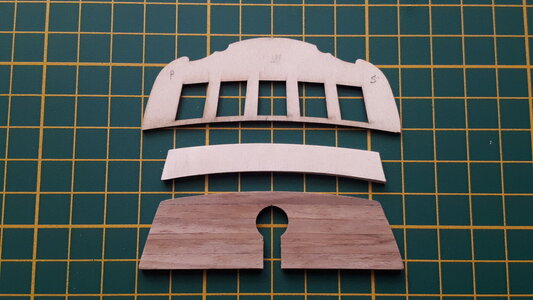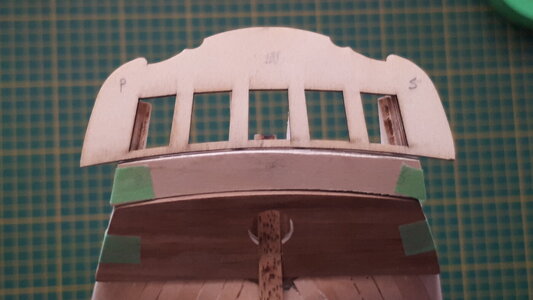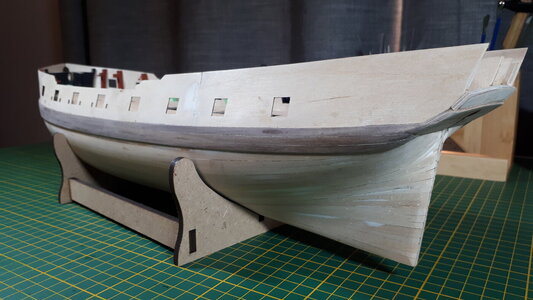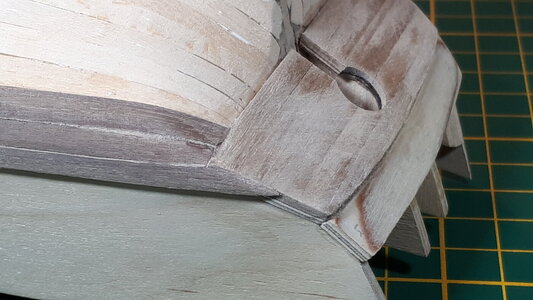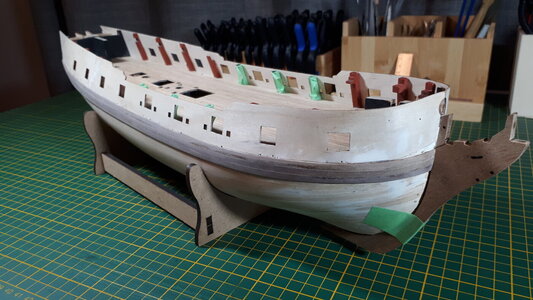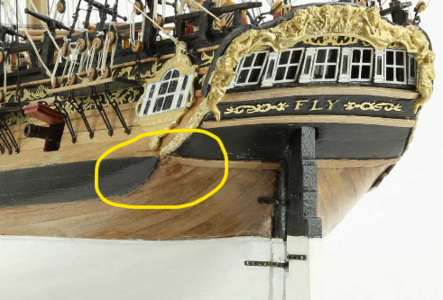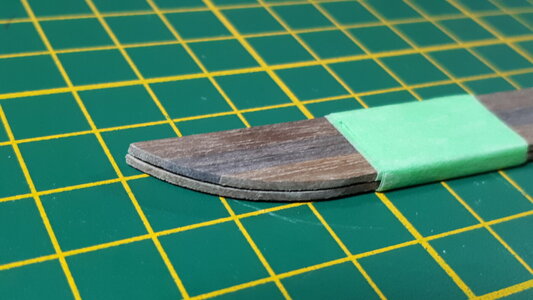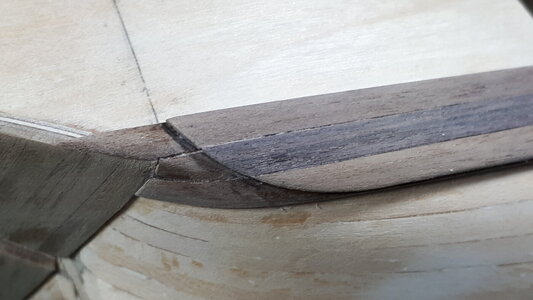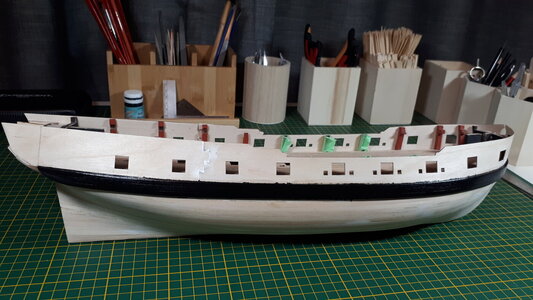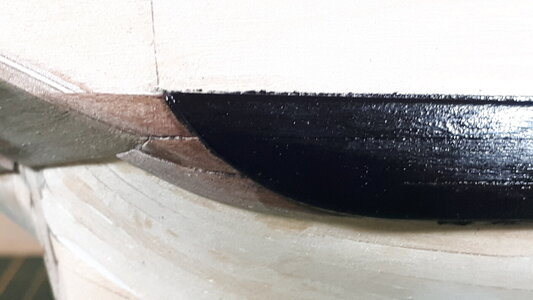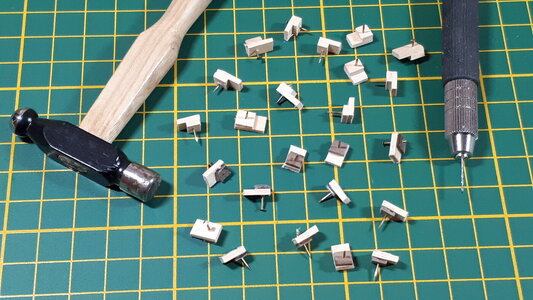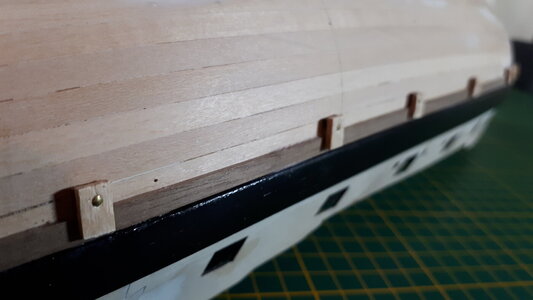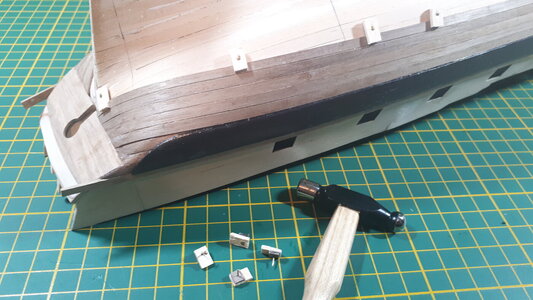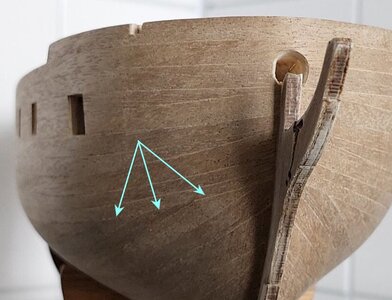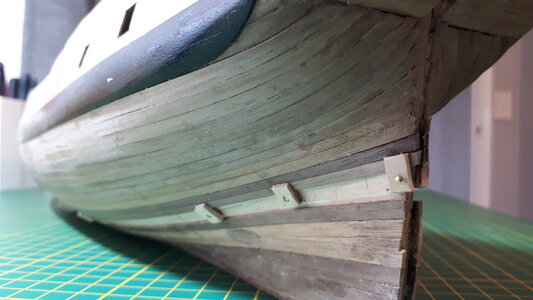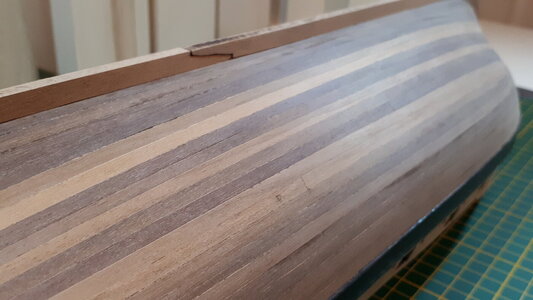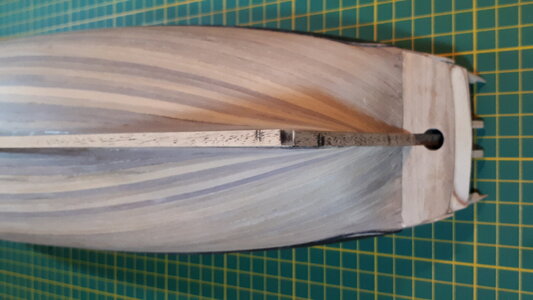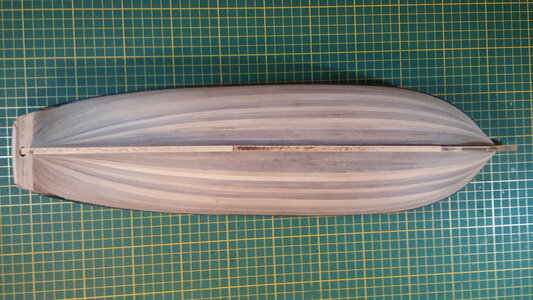Onwards and upwards. My sales pitch to claim remuneration for model ship building from my workplace fell on deaf ears so I have been obliged to open the shipyard at home again and sneak in occasionally to progress my
HMS Fly. Next on the task list is the second layer of planking. These are walnut planks 1mm x 4mm in a variety of shades and colours. First off though, I stole an idea for planking clamps from Olga (
@shipphotographer.com) who is a wizard at this sort of thing and used them to good effect on her
Pegasus build.
View attachment 332489
I started with the first strake below the wale and worked my way downwards towards the keel. Or rather upwards towards the keel with the hull flipped upside down. Twenty one strakes are required on either side of the hull although the calculation was complicated somewhat by each plank being a smidgen over 4mm in width.
View attachment 332490
As with the first layer of planking strips, I used steam to twist, and a heated iron to bend the planks into shape. Pre-forming the plank removes all the stress and tension when the strake is eventually fixed and left to dry on the hull. i.e. No sprung planks
 View attachment 332491
View attachment 332491
I began the tapering towards the bow earlier than I had with the first layer of planking, which I think I had left too late. The clamps worked a treat by applying pressure in two directions, downwards against the surface of the hull and laterally against the edge of the previously installed strake.
View attachment 332492
For all my care and attempts at precision I continue to find the planking process something of an enigma. I was led to believe that the second layer would be a lot easier than the first, having learnt from the mistakes of the first layer and also having a solid area to plank against. But I found it every bit as complicated as I had the first layer, if not more so, being constantly aware that this was the presentation layer and had to be done properly. For instance, my tapering at the bow was never going to be good enough and, rather than using drop planks, I opted for ending the strake short of its full length as shown below in a photo that Heinrich sent me a little while ago. This worked quite well, but my version was nowhere near the perfection of this example
 View attachment 332493
View attachment 332493
I can console myself with the fact that most of the hull will be painted over in a brilliant white eventually, but it is nice to know that, perhaps one day, I too can plank away like the best of them. I found the stern area a bit easier to plank, although with the Fly's curvy hull it still took a combination of tapering and stealers to get me over the line.
View attachment 332494
I can see why some
Fly modellers prefer to leave their hull in its natural state. With some sanding and finishing I think that I too will be hard-pressed to hide all that beautiful walnut with white paint. We'll see.
View attachment 332495
In case you do leave the second layer of walnut unpainted, it pays to install two strakes of a similar shade and colour on either side of the hull at the same time.
View attachment 332496
Well that's as good as my planking gets at this stage. The planking below the wale is now complete and only requires a bit more sanding and then a decision on whether or not to paint it below the waterline
 View attachment 332497
View attachment 332497










 .
.